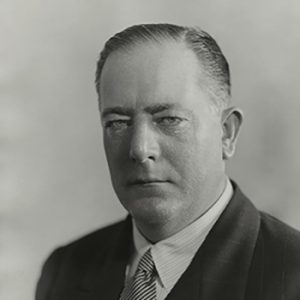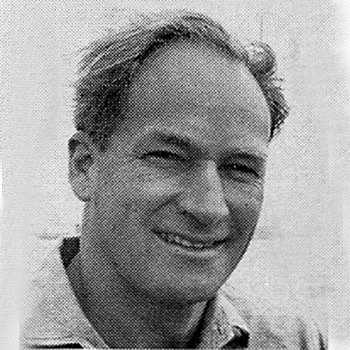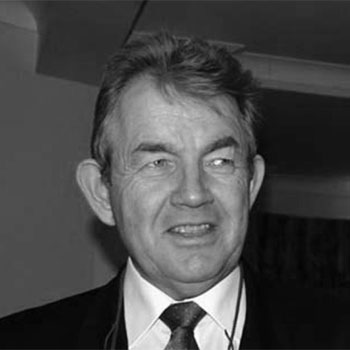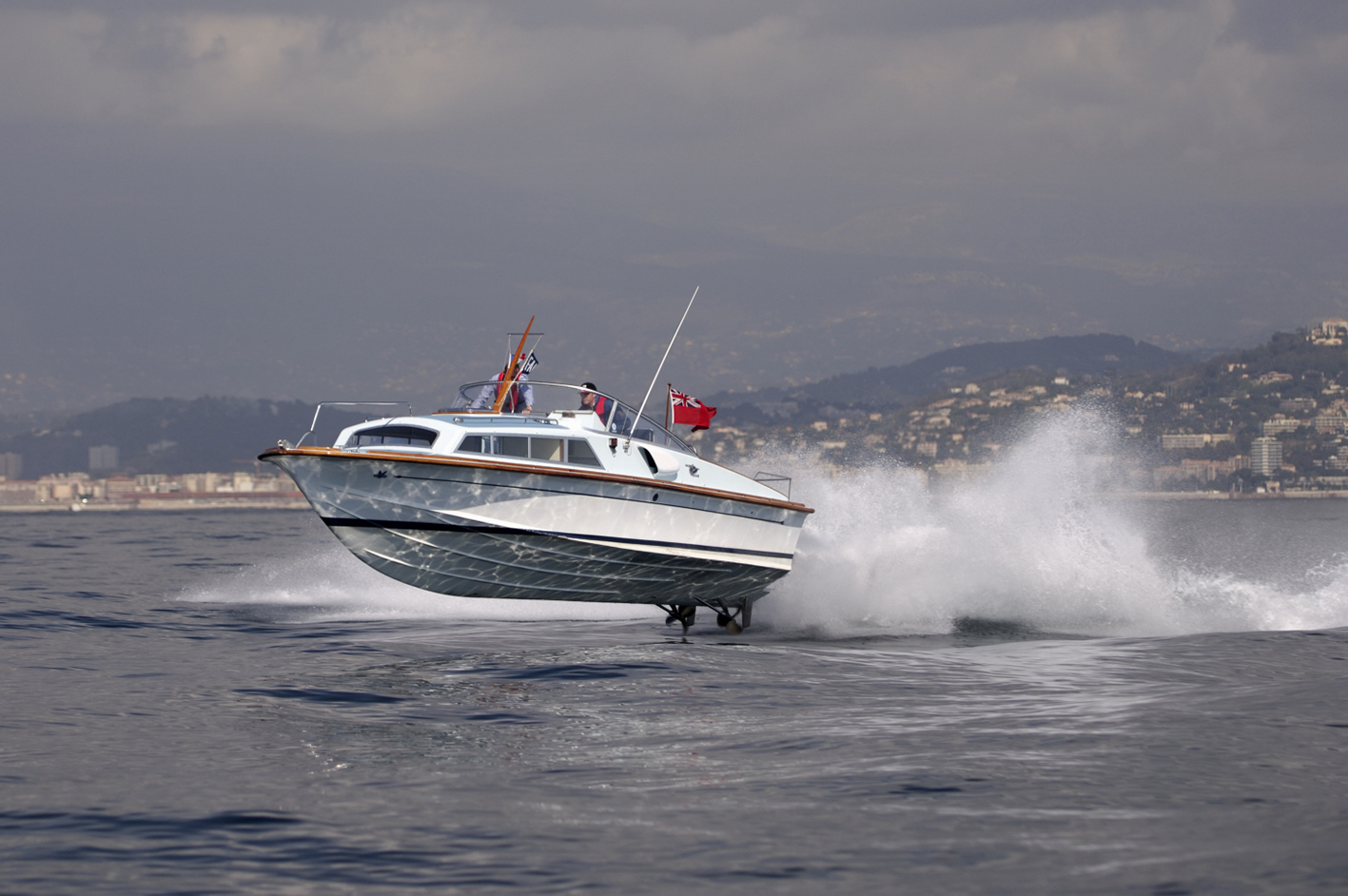
“The Fairey Godfathers”
In July 2001 Motorboat and Yachting published an article, “The Fairey Godfathers”, which described the important roles of Charles Currey, Alan Burnard and Peter Twiss who had become the public face of Fairey Marine, a company that had vanished fifteen years earlier. Alan in particular had become the source of information for the maintenance and repair of the Fairey powerboats.

Sir Richard Fairey
Charles Richard Fairey (1887-1956) was forced to leave school aged fifteen when his father’s timber business failed. Richard Fairey studied at night school and after an apprenticeship qualified as an electrical engineer, but his passion was building and flying model aeroplanes. In 1910 he first supplied kits for his models to A W Gamage’s department store, and he also took a job at the aircraft company Short Bros, where he was quickly promoted to chief engineer.
At the outbreak of war in 1914 he tried to join the Royal Naval Air Service, but he was told he would be of more use building aircraft, so set up on his own account in July 1915, with money borrowed from friends. He was knighted in 1942 and remained head of the company for 40 years, and died in 1956.

C H Chichester-Smith
Charles Henry Chichester-Smith DFC AFRAeS, (1898-1966) known to colleagues and in dinghy sailing circles as Colin “because there were too many called Charles”, joined Fairey Aviation in 1940, to become a director two years later. The chairman of Fairey Marine from the outset, he was also a director of many of the other engineering companies within the Fairey Group.
A key figure in Fairey from the start of the second world war, he was deeply interested in aviation, sailing and new technologies. Born in the United States, he had been one of the first naval flyers, with a British Aviators Certificate – the original form of pilots licence – number 923. He was awarded a DFC in 1916 for chasing a Zeppelin across the Channel and then attacked two German submarines. He had his own Bristol 20 racing plane until 1919, and he and his wife were very active dinghy sailors pre and post-war, which of course continued once Fairey Marine was established.

Charles Currey
Charles Chichester-Smith recruited his sailing friend, Lieutenant Commander Charles Currey RNVR (1916-2010), to join Fairey Marine from the Royal Navy in 1946, shortly after the company was formed. According to Peter Twiss, Charles Currey had been ‘brought up’ on MTBs during the war.
A first rate yachtsman, Charles Currey had won a silver medal sailing in the Finn class at the 1952 Helsinki Olympics. At Fairey Marine he was responsible for developing the design and equipment for the sailing dinghies from Uffa Fox’s original designs and joined the Royal Institution of Naval Architects. He was in charge of the sales of Fairey boats and was appointed Sales Director of the company in 1960 until his retirement in 1973.
However, Charles Currey had also put his earlier powerboat experience to good use, notching up many awards for Fairey in the Cowes-Torquay and other races generally at the helm of a Huntsman 28.

George O’Day
George D O’Day (1923-1987) was the importer of Fairey sailing dinghies into the USA, and later built his own versions of the boats. He was also a competitive sailor and was the helmsman of the Hunt designed Easterner in the 1958 Americas Cup trials, where the Hunt deep-V launch was first displayed.
George O’Day acted as a liaison between Fairey and Ray Hunt and encouraged Fairey to formalise their arrangements with Hunt. O’Day became the US agent for Bruce Campbell, and in 1959 the O’Day Corporation overtook Fairey to become the worlds largest boatbuilder, building a total of over 12,000 boats and concentrating on the ‘small and trailerable’. In 1960 George O’Day won the gold medal sailing in the 5.5m class at the Rome Olympics. He sold his company in 1966, which he subsequently regretted and several years later had unsuccessfully tried to buy it back.

Richard (Dick) Fairey
After leaving Harrow School, Sir Richard’s elder son Richard (1917-1960) worked his way up through the Fairey Aviation Company. Dick’s health had been poor since 1941 as he had become a ferry pilot during the war, delivering Liberator bombers from the United States. On a return trip across the north Atlantic aboard a merchant ship which was torpedoed, he spent five days in an open boat and his frostbitten legs had to be amputated. Despite this handicap, he went back to flying and was renowned as the first British businessman to commute to his office by helicopter.
He was appointed Fairey’s general manager after the war, then deputy chairman of both Fairey Aviation and Fairey Marine following his father’s death in 1956. His second wife was Atalanta Clifford, a curious coincidence with this unusual name of the Greek goddess chosen both for a prewar Fairey flying boat and then the eponymous Fairey sailing cruiser. Due to his continued ill health he had retired early in 1960, but had entered his unlucky Huntress 23 Flica in the Miami-Nassau race in April that year. Sadly, Dick Fairey died in the south of France at the end of July 1960, aged 43. This was only four years after his father’s death.
He was responsible for his school friend Bruce Campbell’s contract with Fairey Marine in 1957 to sell the new powerboats, and they were both friends of Ray Hunt, who Dick and Atalanta had visited in Boston in 1956. The whole idea of the Fairey motorboats came from Dick Fairey and Bruce Campbell, which would explain the marketing arrangements through Bruce’s separate company. It is sad that Dick was not to live to see the motorboats’ glory.

Alan Vines
Alan Vines AFRAeS AMIPE was a director of Fairey Aviation, having joined the company in 1934. He was a versatile aeronautical engineer, and keen dinghy sailor. He was appointed deputy chief engineer in 1947, a director in 1956, and a director of Fairey Marine from the early 1950s. Intriguingly, amid his numerous aircraft patents he had been awarded patent number 529,700 for the Fairey collapsible boat in July 1939.
In 1955 he conceived and designed the ingenious Atalanta sailing cruiser with Uffa Fox. Alan Vines was personally responsible for the lifting mechanism for the twin retracting keels of the Atalanta, and engineered Sir Max Aitken’s yacht Drumbeat with Ray Hunt. Drumbeat was built in 1957 by Lallows in Cowes.

Bruce Campbell
In 1957 Bruce Campbell (1917-1980) had set up his company, Bruce Campbell Ltd, with sole rights to sell all the Fairey motorboats which he had helped to develop at Fairey Marine. He initially tried to sell the original 23’ open launches completed to Hunt’s design, but with no success, so instead bought these boats himself, rebuilt them as Christinas, and continued in friendly rivalry with Fairey.
Bruce Campbell had remained a close friend of Dick Fairey, with whom he had been at Harrow school. A partner in a London Stockbroking firm, Bruce Campbell’s earlier career had included a wartime role as a test pilot for de Havilland, and he had been sales director for Albatross, the manufacturer of the beautiful small aluminium speedboats built at the Norfolk village of St Olaves. He had been selling the Albatrosses from his floating base in the South of France – Rinansey, a substantial motor yacht designed by G L Watson. He left Albatross at the end of 1956 or early 1957.

Alan Burnard
Naval architect Alan V Burnard ARINA (1925-1912) became responsible for the development of all Fairey Marine’s boats from 1957 until he resigned in 1982, with acknowledged success. He had started work as a draughtsman during the war, assisting his father C W Burnard to build wooden minesweepers at the John Morris Fleetland Shipyard in Gosport. Alan Burnard was contemplating setting up his own design practice in 1957, when he was recruited to develop Hunt’s new seagoing motorboat at Fairey Marine.
Alan Burnard was both an exacting engineer and intuitive designer, with an eye for harmonious lines and he had a clear, distinctive drafting style. He was also an expert in propeller design and these skills were sought for many production and raceboats in addition to Fairey’s own. When he left Fairey in 1982 he set up his own office at Hamble Point until 2011, when he fell and damaged his leg.

Peter Twiss
Lieutenant Commander Peter Twiss DFC OBE (1921-2011) had been an heroic but extremely modest wartime pilot before becoming a Fairey Aviation test pilot post war. He had flown dozens of aircraft types including the Mosquito, and fought in many theatres of the war. A colleague and close friend of Dick Fairey, he was the first person to exceed 1,000mph in level flight, and became a national hero when, in a Fairey Delta 2, he set up the world air speed record of 1,132mph on 10th March 1956, by a huge margin of 310mph. This record stood for well over a year.
Yet in 1960 Peter Twiss was to be made redundant as there was no obvious role for him at Westland Aviation after the merger with Fairey, and so he joined Fairey Marine to help develop, market and race the motorboats.
Peter Twiss subsequently managed the Fairey Boat Park, then oversaw the construction of the marina at Hamble Point, following Fairey Marine’s demise.
Others at Hamble Point
In addition to the few people specifically mentioned, it must not be forgotten that Fairey Marine also employed up to 300 people from time to time at Hamble Point.
These comprised dozens of skilled boatbuilders, engineers, woodworkers, painters, metalworkers, plumbers, electricians, draftsmen, tractor drivers, boatmen and office staff, without whom these wonderful boats would not have existed.

Justin Birt
A yacht broker from south Wales, Justin Birt became fascinated by the Fairey powerboats, and so founded the Fairey Owners’ Club in 1986, by a letter in Motor Boat and Yachting, inviting like minded owners to contact him.

Tony Hamilton-Hunt
Carefully avoiding any formal role, except ultimately ‘archivist’, the likeable, enthusiastic and helpful Tony HH was the life and soul of the FOC until his untimely death in 2014. HH attended every event and knew every boat, its location, history and owners, and his collection of memorabilia became the foundation of the FOC archives






